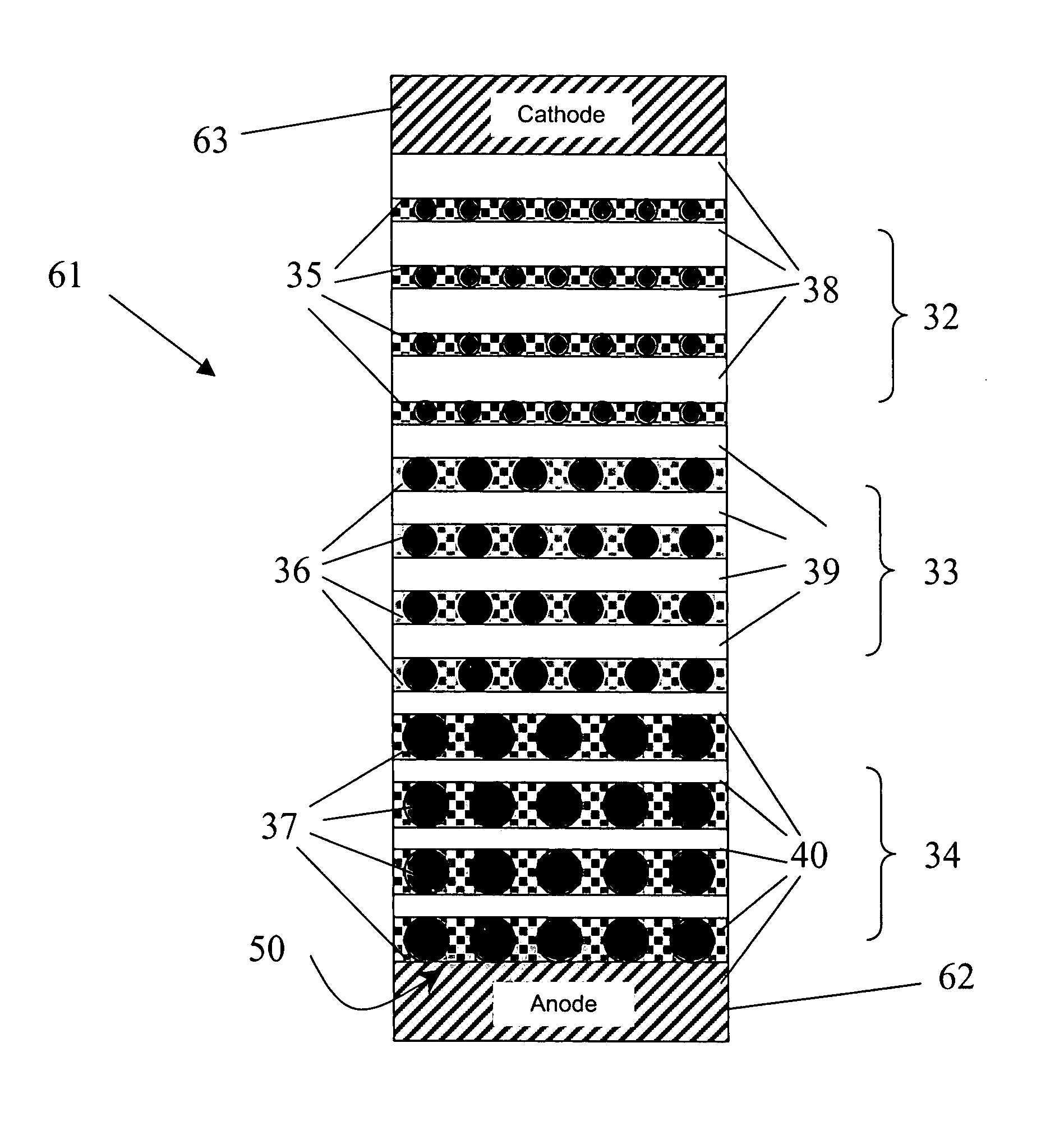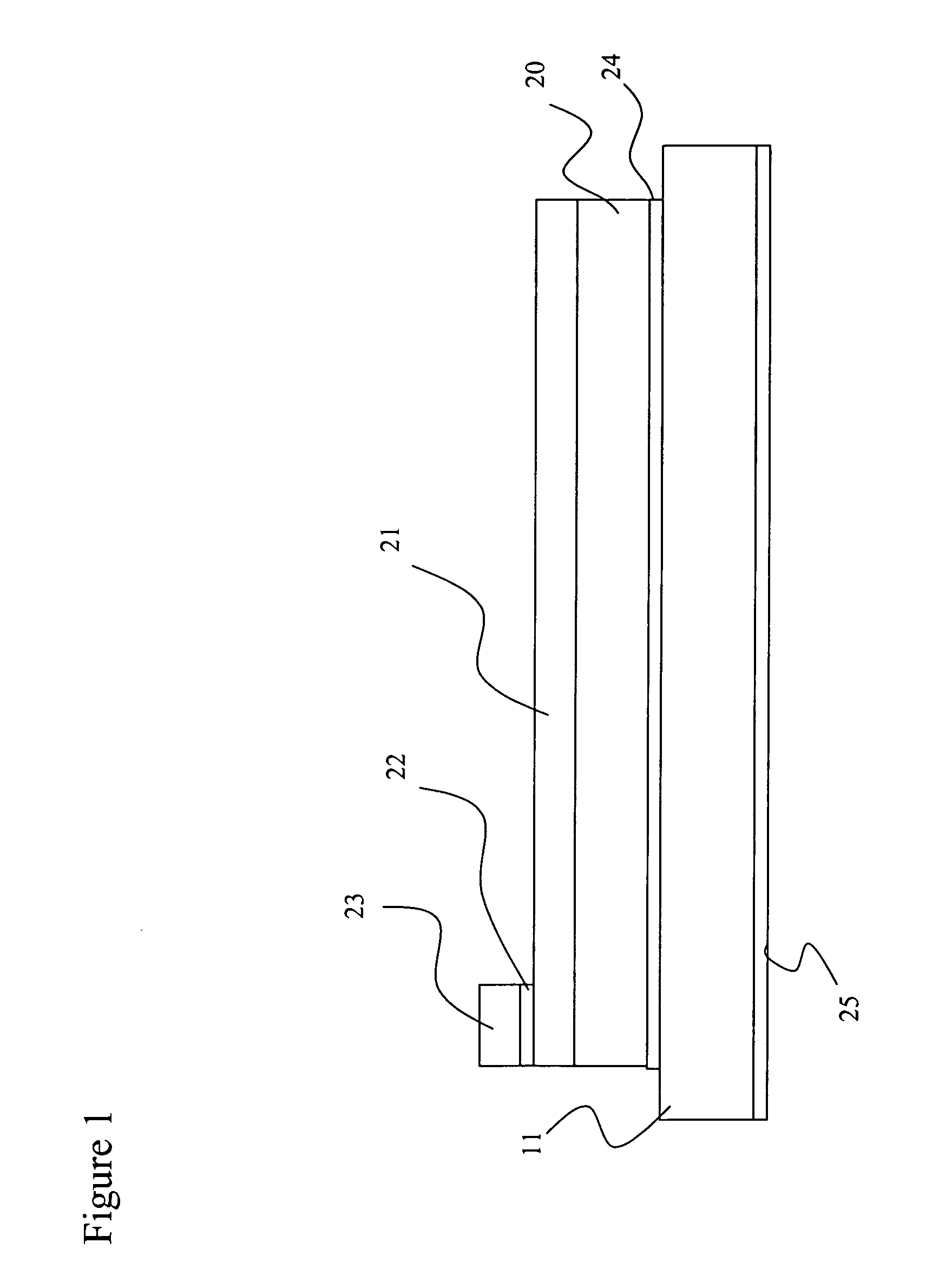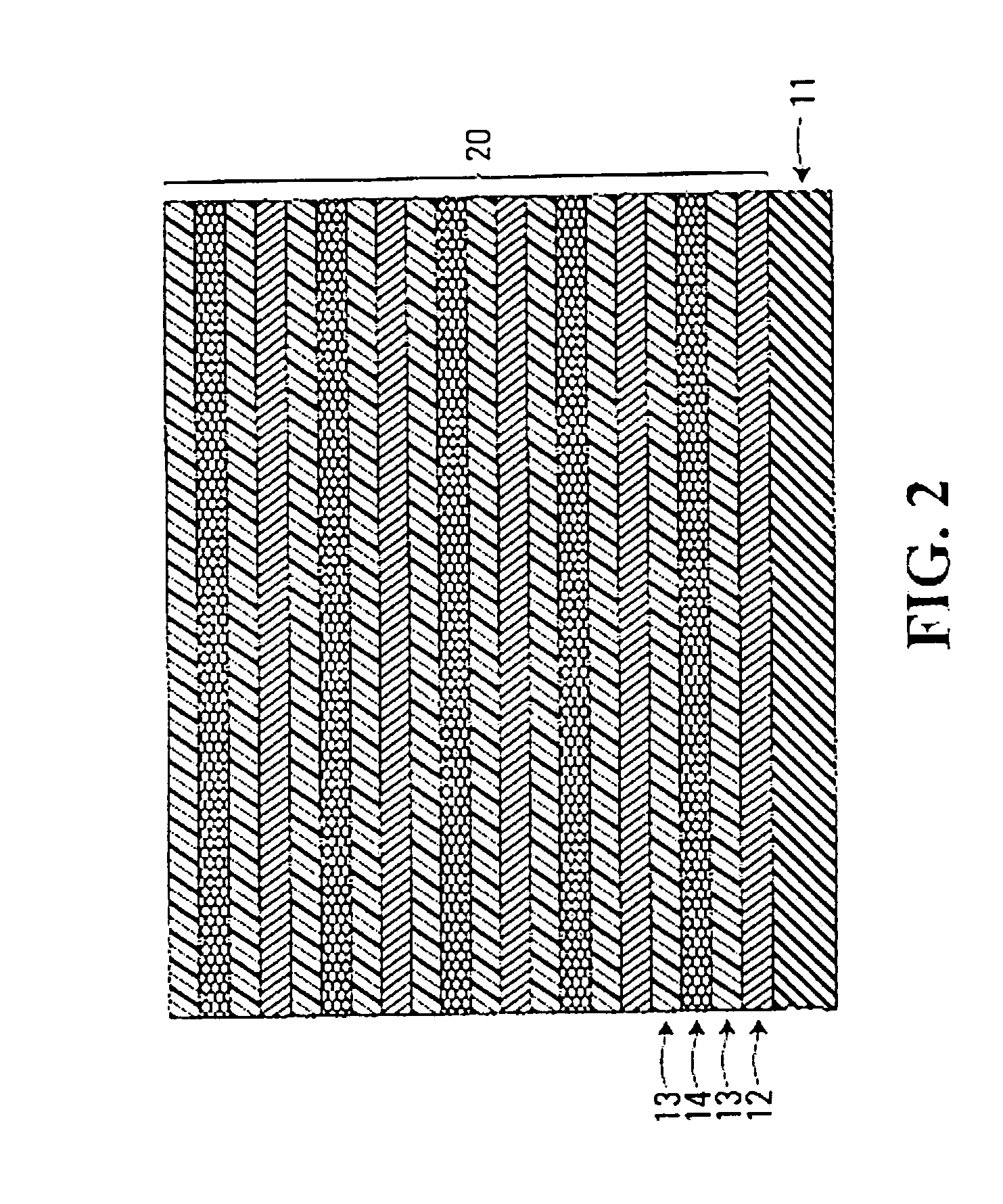Carbon passivation in solid-state light emitters
- Summary
- Abstract
- Description
- Claims
- Application Information
AI Technical Summary
Problems solved by technology
Method used
Image
Examples
example 1
[0101] [Silane (SiH4) and oxygen (O2) are added to an argon plasma stream produced by an electron cyclotron resonated (ECR) reactor via dispersion ring. The ratio (Q) of silane to oxygen has been varied between 3:1, 1.7:1, 1.2:1, 1:1.9 and 1:2. An erbium precursor (tris(2,2,6,6-tetramethyl-3,5-heptanedionato) erbium(III) [Er+3(THMD)3]) is placed in a stainless steel oven held between 80 and 210° C.
[0102] A carrier gas of Argon is used to transport the Erbium precursor from the oven through a precision controlled mass-flow controller to a dispersion ring below the silane injector and above the heated substrate. The instrument pressure is kept at about 2×10−4 torr. The substrates used are either heavily doped silicon, fused silica or silicon wafers on which is thermally grown an oxide layer of 2000 nm thickness. Alternatively, a reflective substrate, a reflective conducting layer on the silicon or a transparent substrate with a refractory transparent conductor thereon can be used. Th...
PUM
 Login to View More
Login to View More Abstract
Description
Claims
Application Information
 Login to View More
Login to View More - R&D
- Intellectual Property
- Life Sciences
- Materials
- Tech Scout
- Unparalleled Data Quality
- Higher Quality Content
- 60% Fewer Hallucinations
Browse by: Latest US Patents, China's latest patents, Technical Efficacy Thesaurus, Application Domain, Technology Topic, Popular Technical Reports.
© 2025 PatSnap. All rights reserved.Legal|Privacy policy|Modern Slavery Act Transparency Statement|Sitemap|About US| Contact US: help@patsnap.com



